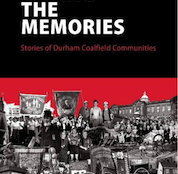Without its history, its politics and its connection to the wider movement, the Co-operative Group is just like any other supermarket chain, says STEVE THOMPSON.
The history of the Co-operative Wholesale Society and Co-operative Retail Services has been well documented. There have been a number of excellent books written by a variety of authors, including Percy Redfern, GDH Cole, Arnold Bonnar and Johnston Birchall (see bibliography below).
 One of the most recent, Building Co-operation by John F Wilson, Anthony Webster and Rachael Vorberg-Rugh, was published in 2013 to coincide with the 150th anniversary of the CWS. Written by three academics, it ended at the point where the Co-operative Group, successor to the CWS, went into the financial crisis that led to the loss of half its assets.
One of the most recent, Building Co-operation by John F Wilson, Anthony Webster and Rachael Vorberg-Rugh, was published in 2013 to coincide with the 150th anniversary of the CWS. Written by three academics, it ended at the point where the Co-operative Group, successor to the CWS, went into the financial crisis that led to the loss of half its assets.
The importance of recording co-operative history cannot be over estimated, for without its history, the Co-operative Group today is just like any other supermarket chain. The co-operative structure has now been lost. The CWS used to have a federal role in the movement – its members were co-operative societies while individuals became members through its shops and the Co-operative Retail Services, as well as by joining other co-operative societies.
The CWS was a central player in the wider co-operative movement, which counted solidarity as central to its ethos. Each section of the movement played a part in fulfilling the co-operative values, principles and purpose.
The overarching aim of the movement was to build a co-operative commonwealth to eliminate the exploitation of workers and consumers. Its vision was to create a society where the well-being of all people was achieved through a caring and co-operative culture. The fierce competitive nature of capitalism, driven by small cliques of wealthy individuals for private gain, would be gradually replaced by a co-operative commonwealth.
Of course, there were many conflicting opinions about how this could be done, but through its co-operative congress and the many opportunities members had for debate and decision making, agreement was usually reached. The success of the CWS up to and into the 1950s should be acknowledged.
However, in the 1960s co-operative retailers began to be overshadowed by the private sector and the movement’s confidence faltered. It attempted to look like other retailers, in some cases even dropping the name Co-op from its branding.
CWS departments often competed with each other, destroying the strongest advantage of co-operation. By the mid-1990s, the CWS and the co-operative retail infrastructure was looking fragile, emboldening private sector players to attempt an aggressive takeover, which was fought off.
Seeds of destruction
It was clear things had to change, however, and a number of major decisions were made at the turn of the century which altered the co-operative sector. At the time, each change seemed like a positive step towards a co-operative renaissance, although it’s now clear they carried within them the seeds of destruction.
In fact, the movement had become cumbersome and inefficient in the second half of the 20th century. Many internal ‘empires’ had been established within the Group, and managers and executives were focussed on their own sub-organisations rather than the business as a whole.
This led to competition, secrecy and occasional hostility between departments – the opposite of co-operation. This problem was never resolved, so the movement ended up with a complicated and unnecessary structure involving CWS retail as well as Co-operative Retail Services and independent co-op societies.
The CWS was at the centre of a federal structure which included a manufacturer, producer, wholesaler and buyer, supported by retail societies and organisations such as the Co-operative Union (now Co-operatives UK) and the Co-op Party.
In May 2000, a merger between the CWS and CRS was announced, creating the Co-operative Group (CWS) Ltd. Further mergers reduced the number of independent societies making the Group the major player in the movement overall.
Meanwhile, a developing independent co-operative sector had been emerging outside the formal movement with newer co-operatives providing products and services of their own. These new co-operatives received support and inspiration from Co-operatives UK, co-operative development bodies, and other federal organisations, such as Radical Routes.
The Group showed a healthy trading surplus for the first 12 years of the 21st century and this was distributed to the wider movement and its members. The organisation also introduced initiatives that led the sector in a number of worthy areas, such as fair trade, climate change, ecology, co-operative education, social justice, alleviating poverty, animal welfare and membership activities.
Of course, the members received a share of the profits according to how much they spent, as they always had done. Active co-operative members were reasonably content with this because the surplus was being distributed in accordance with co-operative principles and purposes.
Furthermore, the organisation was constituted as a democracy. Members were represented at general meetings and the executive knew they were accountable to the co-operative as a whole. As a result, the Co-operative Group maintained healthy and mutually beneficial relationships with the movement at both national and international levels, and most elected members felt the Group was worth supporting.
Internal resistance
However, within the organisation resistance was growing to the very basic principles of co-operation, for the business was run by employees who neither understood nor had any interest in co-operation. For them, working for the Group was a career like any other, and their default position was to resist any input from members.
So they blocked attempts at cross marketing the co-operative family of businesses, and refused to explain the co-operative difference to members and customers, despite the repeated efforts of elected members to have information about co-op values and principles displayed at the stores.
As a result, the co-operative status of the organisation weakened, and members who knew nothing about its history or values ceased to understand why it was different to other capitalist businesses. For a while, the Group survived due to the commitment of co-operative enthusiasts, only for their efforts to be undermined by disastrous financial mismanagement leading to the Group’s dramatic demise in 2013.
Over this period a rift had been growing between the Group’s executive and the wider society which sustained it, specifically between chief executive Peter Marks and the elected board which represented the interests of members.
Marks was a maverick who did not like co-operation and had an obsessive desire to control larger and larger empires. The board could not keep him in check, while most of the executive were of similar mind to the CEO. The executive and management took no notice of elected members and eventually the business became unviable. Marks retired and a new phase in the organisation began.
The new CEO, Euan Sutherland, took over when the Group was at the point of bankruptcy, facing massive debts. Co-operative values and principles were sacrificed to keep the business going. Surplus was no longer returned to members and the wider co-operative movement so the only significant expenditure was central administration costs, including obscene salaries paid to executives and senior managers, such as £2.5 million to the CEO and six-figure pay-offs to displaced executives.
Two reports were commissioned at considerable expense, one by Lord Myners and one by Sir Christopher Kelly. The former recommended a new structure and constitution, while the latter produced an analysis of the Group’s collapse. As a result the Co-operative Group ceased to be a co-operative, at least in the sense that’s enshrined and measured by the values and principles of the movement (although the Co-operative Group’s executive argue otherwise).
Under the new system, board directors were appointed by an independent professional chair, Allan Leighton, who made clear that he would not allow anyone carrying ‘co-operative baggage’ to become a director. Instead he appointed a discredited ‘New Labour’ politician, two people from the charity sector, an ex-senior civil servant and people from the private sector.
There is a National Members’ Council, but it does not have the power to hold the executive to account and is not designed to be a vehicle for members’ concerns. Most control is invested in the chair and CEO whose experience lies in private sector supermarket chains and, in the case of the chair, in privatising Royal Mail – certainly no ‘co-operative baggage’ there.
The political link
 At the 2015 annual general meeting last May, the chair made clear that the Co-operative Group is resolutely
opposed to the wider co-operative movement and the co-operative ethos. This was demonstrated most starkly by the executive’s attempts to severe the link between the Group and the Co-op Party, a move that was defeated by members, only to re-appear this year to be debated again at this month’s AGM.
At the 2015 annual general meeting last May, the chair made clear that the Co-operative Group is resolutely
opposed to the wider co-operative movement and the co-operative ethos. This was demonstrated most starkly by the executive’s attempts to severe the link between the Group and the Co-op Party, a move that was defeated by members, only to re-appear this year to be debated again at this month’s AGM.
According to the chair, this link to the party is merely a question of the Group providing a ‘political donation’, as if the party was a charity, not an integral and important part of the movement.
A donation is a charitable concept – one body freely giving to a worthy cause, just as capitalist big business has done since the 19th century. It’s called philanthropy, token money donated out of a company’s excess profits at the discretion of the board, and mainstream businesses are perfectly comfortable with it.
Co-operatives, on the other hand, believe in collective self-help and solidarity, so the Co-operative Group has always paid a subscription to the Co-operative Party, and in return the party plays a supporting role in the movement to which the Co-operative Group belongs.
But the new chair and executives do not regard the Group as a co-operative, so they pretend there is no difference between a subscription and a donation, and are putting a long-standing and vital connection to the political process in jeopardy.
One can only ask, what parts of the co-operative movement will be next to be sidelined as ‘charitable causes’ – Co-operatives UK, perhaps, or the Co-operative College and Heritage Trust, or even the International Co-operative Alliance?
—
Steve Thompson is a director of Principle 5 Yorkshire Co-operative Resource Centre.
See also: ‘Keep It Co-op – Again!’
Read more about Co-operatives UK here, and about co-operative values and principles here.
Brief bibliography
A Centenary story of the Co-operative Union 1869 – 1969, by Desmond Flanagan.
British Co-operation, by Arnold Bonner.
Building Co-operation – A business history of the Co-operative Group 1863 – 2013, by John F Wilson, Anthony Webster & Rachael Vorberg-Rugh.
Co-op – The People’s Business, by Johnston Birchall.
The Story of the CWS, by Percy Redfearn.
A Century of Co-operation, by GDH Cole.



11 September 2018
I am interested in the fact that, in 1937, both Clement Attlee and The Labour Party (of which, by then, he was Leader) committed The Labour Party to ‘the establishment of the Co-operative Commonwealth’.
(This had nothing to do with the evolution of the British Empire into ‘The Commonwealth’.)
My questions are:
Did the ILP promote this concept of ‘The Co-operative Commonwealth’?
Is that where Clement Attlee, as early as his 1922 general election manifesto, get this idea from?
How is it, that this 1937 commitment was watered down and lost in the 1945 manifesto, ‘Let Us Face The Future’, wherein the different term, ‘The Socialist Commonwealth’, in vague terms was substituted?
Many thanks for any comments,
John Courtneidge
9 May 2016
Further to Steve’s article I’d like to add that, whatever the pros and cons of the now abolished regional / area system of membership involvement in the Co-operative Group, there is no doubt that the merger with the United Co-operative Society in 2008 was the immediate source of the problems that brought the organisation to its knees five years later.
Driven by the commercial need to scale up its operations, the merger installed United’s Peter Marks as the Chief Executive Officer of the enlarged Group, a man on a well known mission to take the organisation from ‘League One to the Premier League’ in double quick time. Hence the seriously flawed decision to purchase the failing Somerfield food business at an inflated price and bring the Britannia Building Society into the Co-operative Bank.
Amazingly, Britannia’s substantial and post-crash debt-ridden commercial property loan book was audited in-house only, as the Kelly Report later revealed. To compound the problem, Marks effectively engineered a ‘reverse takeover’ of the management, replacing several senior respected Group executives with his own men, most of whom were not up to the job. Women almost disappeared from the top level of the organisation.
Inadvertently or otherwise, the situation was made worse by the lucrative United-driven compensation packages for ‘retiring’ Group Board members in 2008, which meant that 75 per cent of Board members in 2009 were entirely new to that level of responsibility – not the best way to control an over-ambitious CEO, not that he was much interested in what they had to say anyway. Towards the end of his tenure Marks was to blame ‘Co-op democracy’ for his woes.
Both the Myners Report into the fiasco at the Group and the Kelly Report into the near meltdown of the Bank, are well worth reading and tell a sorry tale of poor decision-making, IT disasters, personal arrogance and inadequate democratic supervision. Total financial and organisational catastrophe was narrowly averted in 2013 but, as Steve says, a heavy price has been paid for its survival.
On a separate but related topic, the Group’s support for the Co-operative Party is again on the agenda of this year’s Annual Meeting, so if you are eligible, make sure you vote to ‘Keep It Co-op’ before 18 May.